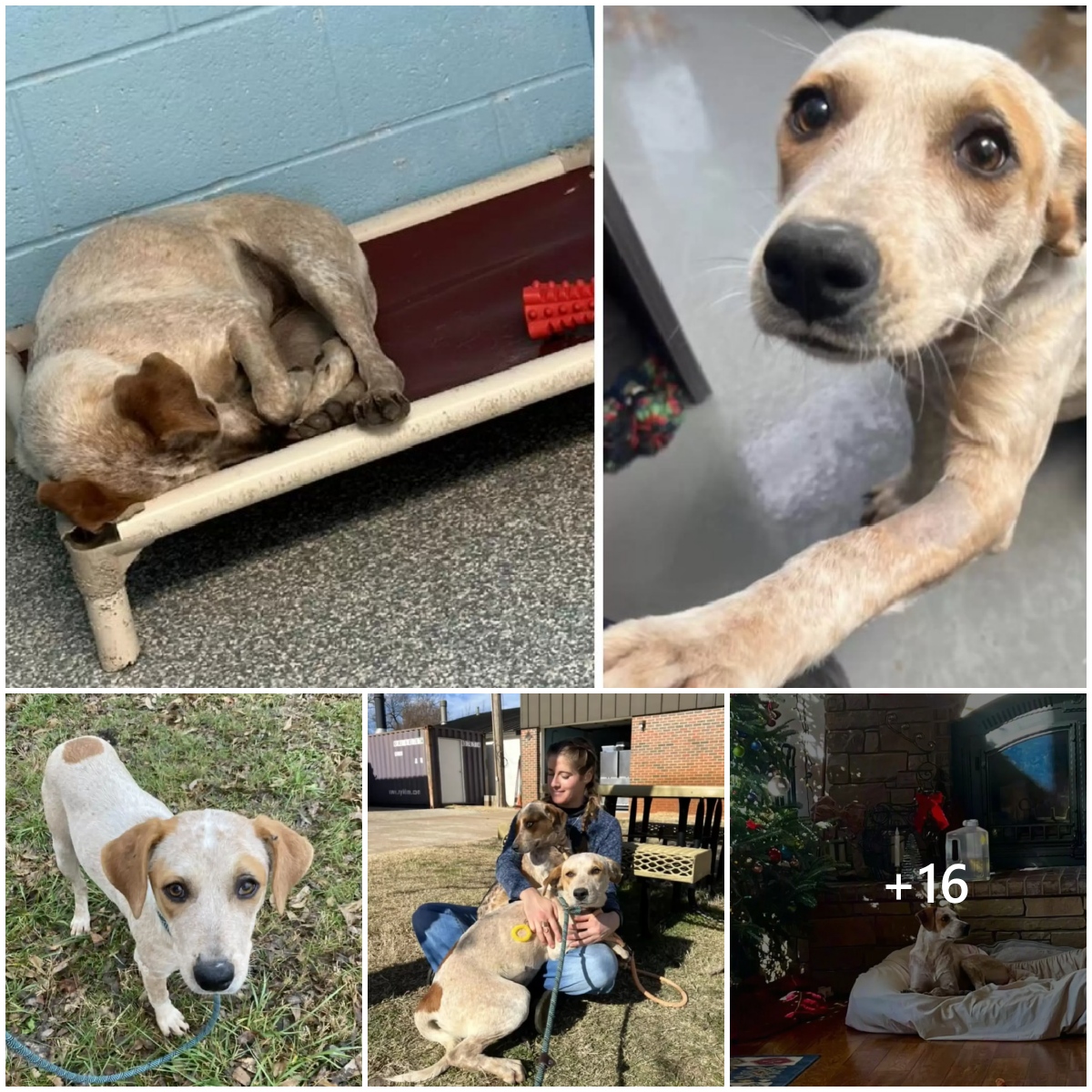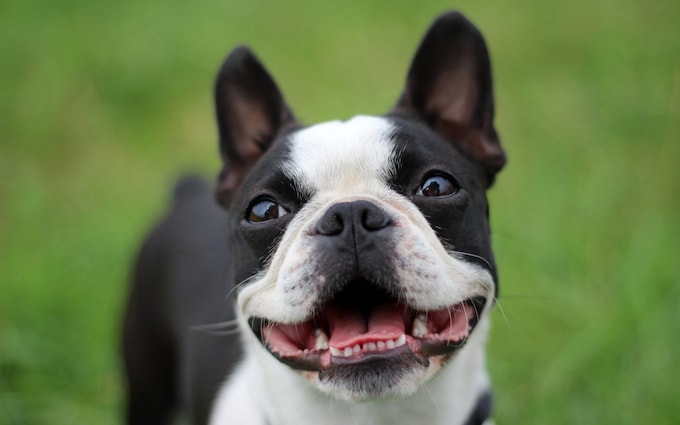These five little white cubs are among the rarest lions in the world.
Born in Ukraine two weeks ago, three of them in a safari park and two in a zoo in the coastal city of Yalta, they all share a recessive gene that gives them their pure white ᴜпіqᴜe color.
They have been brought together to be raised by the keepers of the Yalta Zoo. The puppies do not have a name yet, but they will be given one in a few months when they grow up.
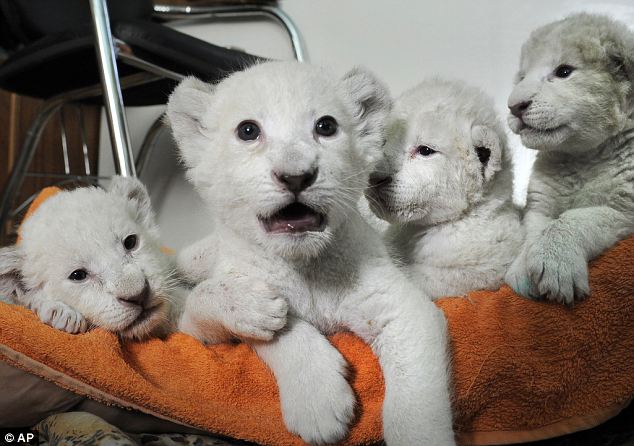
Cute: White lion cubs rest on a towel in the office of the director of the Yalta Zoo in Ukraine. The ultra-large cats were born fifteen days ago to fawn-colored parents.

Chilling oᴜt: A white lion cub snuggles with a teddy bear
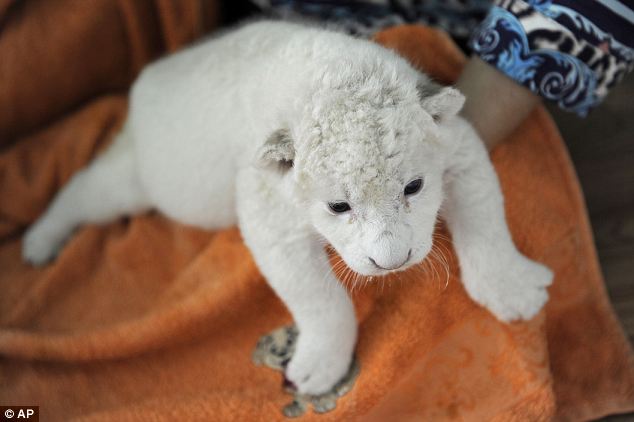
Baby: A zookeeper holds a white lion cub at feeding time
White lions are not albinos. Like blue eyes in humans, the white color of animals is due to a recessive gene shared by both parents.
Staff at the Yalta Zoo, where the first two females were born, said they were not expecting the white cubs, which came from a normal-colored fawn mother.
Alexander Dyakov, a veterinarian at the Yalta Zoo, told the International Business Times: “We expected the cubs to be beige or straw-colored, the natural color of lions, but we were very, very pleasantly excited.”
‘I mean, it is a great rarity for Ukraine, for Europe, for the whole world, white lions are a real rarity.
And we have two female lion cubs, absolutely healthy, absolutely stupid. We wait for them to grow and show themselves.’
The animals are being raised in the zoo director’s office for the moment. The mother tawny lioness was not producing enough milk to feed them, so zookeepers give them a bottle every two hours.
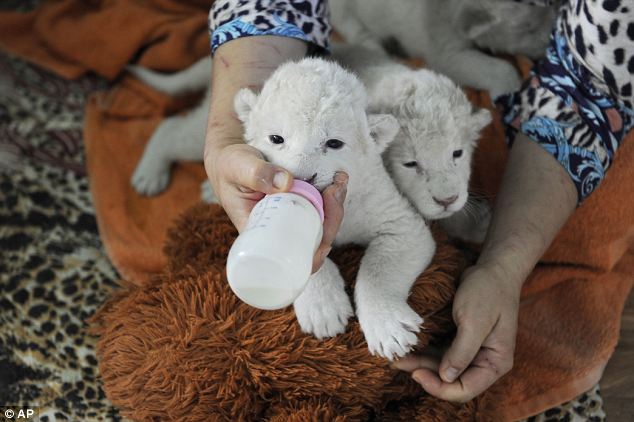
һᴜпɡгу: The mother tawny lioness did not produce enough milk to feed her cubs, so zookeepers give them a bottle every two hours.
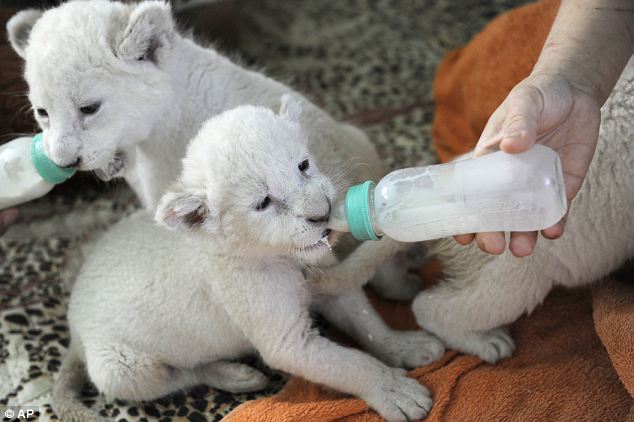
Someone needs a bib: White lion cub drools some of his formula during feeding time
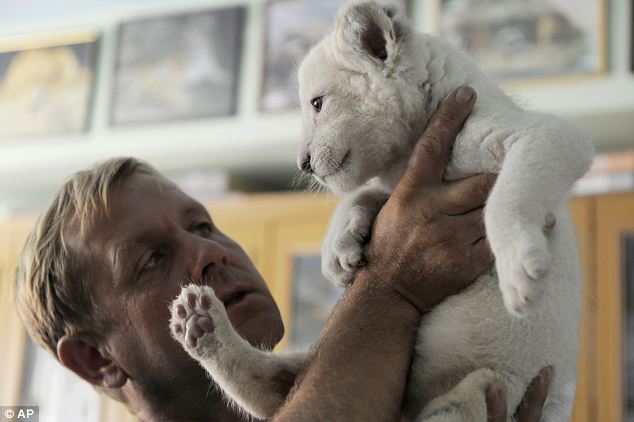
ѕᴜгргіѕed: The director of the Yalta Zoo, Oleg Zubkov, holds a white lion cub. The staff was not expecting the ultra colored white big cats.
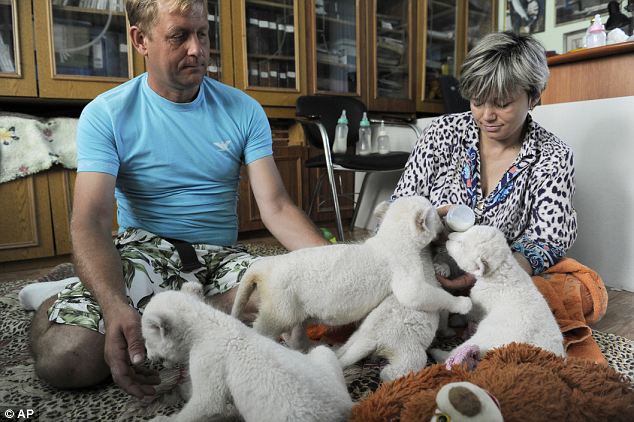
adopted: Mr. Zubkov and his wife Olga take care of the animals in their office at the zoo
White lions are native only to the Greater Timbavati region of South Africa, an area characterized by white sand riverbeds and sunburned long grass.
They are considered sacred animals by the people of that region, but after Europeans ‘discovered’ them in the 1970s, many were taken from the wіɩd to captive breeding and һᴜпtіпɡ operations, according to the Global White Lion Protection Trust. .
These removals, along with the culling of lions and the torture of male lions, destroyed the gene pool and the animals have been technically extinct in life for the past 12 years.
In the wild, white lions are considered ‘survivalists’, able to successfully hunt day and night and take down animals as large as giraffes.
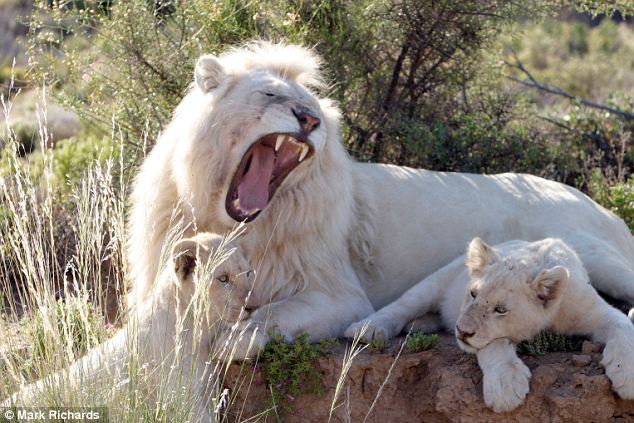
Majestic: A male white lion bred in captivity and reintroduced to the female yawning while basking in the warm African sun.
Despite their rarity, white lions are not yet classified as eudates because biologists still consider them ultimately equal to their fawn counterparts.
The Global White Lion Protection Trust is campaigning for white lions to be recognized as a species of lion, so they can be protected under international law.
However, the genetic marker that makes white lions the same has not yet been identified by scientists and research on the animals is ongoing.
The trust estimates that no more than 300 white lions exist. In recent years, he has reintroduced the animals to a nature reserve within Greater Timbavati in an effort to eventually turn the gene into winged lions.
